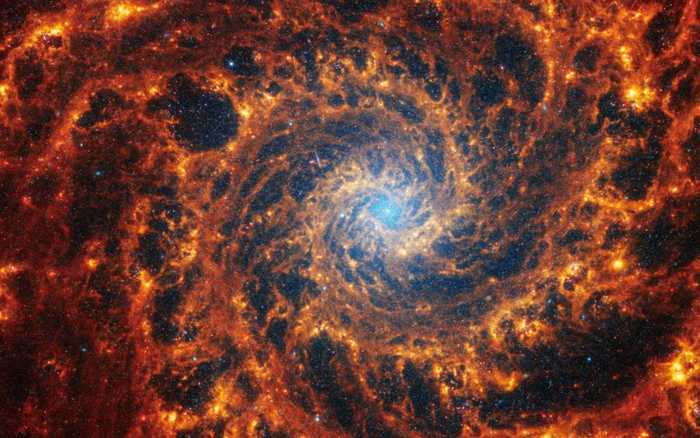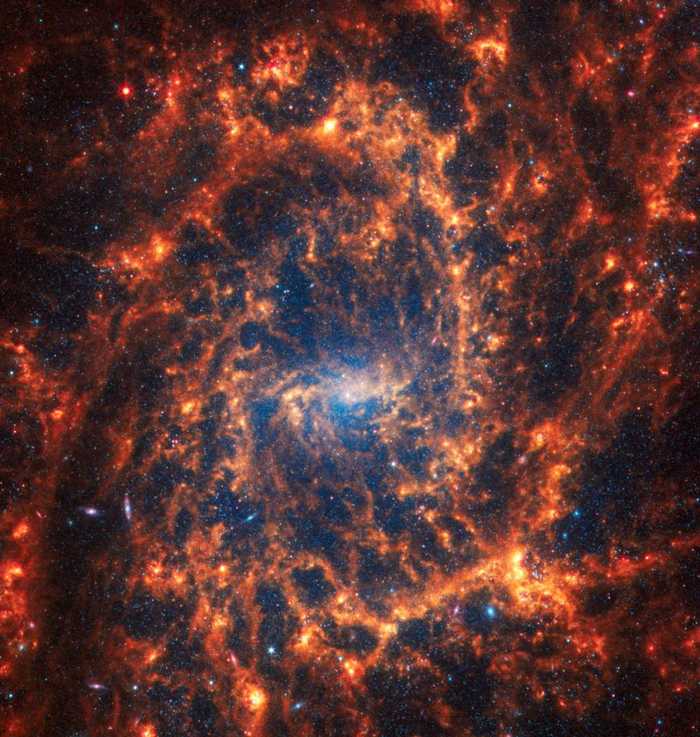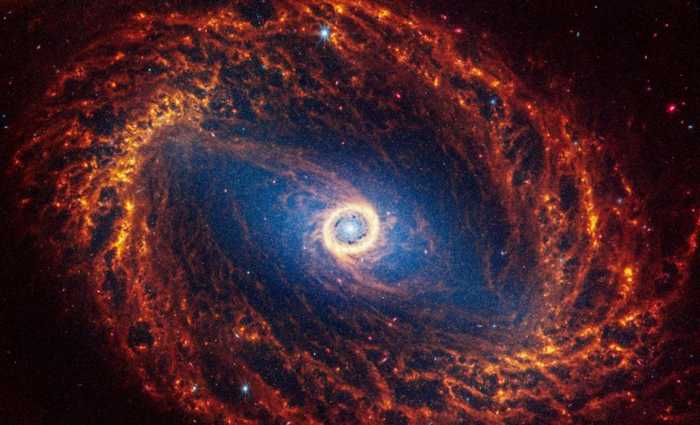Published 11:48 IST, January 30th 2024
The James Webb Space Telescope recently shared detailed pictures of 19 spiral galaxies located close to our Milky Way.
Advertisement
The James Webb Space Telescope recently shared detailed pictures of 19 spiral galaxies located close to our Milky Way. These images, released by the Physics at High Angular resolution in Nearby GalaxieS (PHANGS) project, provide insights into how stars form as well as the structure and evolution of these galaxies. The pictures were made public on Monday by a group of scientists who work with various astronomical observatories.
19 Spiral Galaxies revealed
The nearest galaxy among the 19 is called NGC5068, located about 15 million light years away from Earth, while the farthest one is NGC1365 situated approximately 60 million light years away. A light year is the distance that light travels in one year, equivalent to 5.9 trillion miles (9.5 trillion km).
Advertisement

The James Webb Space Telescope (JWST), launched in 2021 and operational since 2022 has been revolutionising our understanding of the early universe. It captures breathtaking images of the cosmos and primarily observes the universe in the infrared.

In comparison with the Hubble Space Telescope which was launched in 1990 and still in operation focuses on optical and ultraviolet wavelengths when studying the universe.
Advertisement
Observations made by Near-Infrared Camera and Mid-Infrared Instrument
Spiral galaxies, which look like massive pinwheels are a frequently found type of galaxy. The Milky Way, where our solar system resides is an example of this galaxy type. The recent observations were made using the Near-Infrared Camera (NIRCam) and Mid-Infrared Instrument (MIRI) of the James Webb Space Telescope (Webb). These observations reveal approximately 100,000 star clusters and potentially millions or even billions of individual stars.

University of Oxford astronomer Thomas Williams, who played a key role in processing the data from these observations, highlighted the significance of the findings. According to him, this data provides us with a fresh perspective on the earliest stages of star formation in the universe.
Advertisement
"Stars are born deep within dusty clouds that completely block out the light at visible wavelengths - what the Hubble Space Telescope is sensitive to - but these clouds light up at the JWST wavelengths. We don't know a lot about this phase, not even really how long it lasts, and so these data will be vital for understanding how stars in galaxies start their lives," said Williams.

Roughly half of spiral galaxies feature a straight structure known as a bar, extending outward from the centre of the galaxy to which the spiral arms are connected.
Advertisement
"The commonly held thought is that galaxies form from the inside-out, and so get bigger and bigger over their lifetimes. The spiral arms act to sweep up the gas that will form into stars, and the bars act to funnel that same gas in towards the central black hole of the galaxy," Williams added.
The pictures allow scientists for the first time to see the details of the clouds made of dust and gas where stars and planets are born in galaxies outside our Milky Way. These galaxies are called the Large Magellanic Cloud and Small Magellanic Cloud, and they are like smaller companions to our big Milky Way.
Advertisement
11:48 IST, January 30th 2024